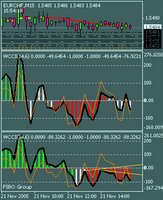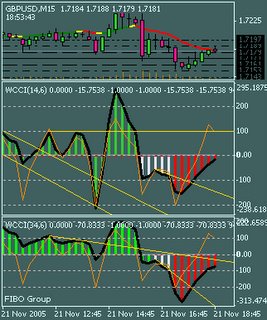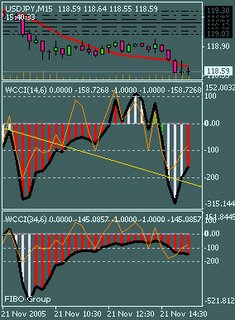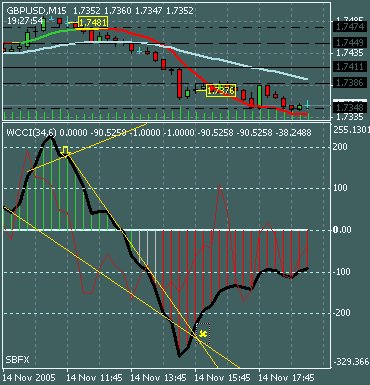This blog is probably not going to be read by anyone (except for one forced person), but if it is, here are some reasons why I do it: this is primarily for my main reference and a way to summarize my findings. It's been said that when you have to teach something, you learn it better, so I'm using it to summarize and structure my thoughts better.
I've read Mark Douglas' book "Trading in the zone". It's a pretty neat book about trading psychology. A big book with a lot of talk, but here is what I got out of it:
The market itself doesn't do anything else than provide information. It's neither good or bad. In any single moment, market tells us what the prices are, but never tells us what the next move will be. We are not responsible for what the market does or doesn't do, but we are responsible for everything else that results from our trading activities, so there is no point in trying to beat the market. We have to embrace the responsibility and stop expecting the market to do or give anything to us.
Our minds work by associating things and sometimes we might see the same patterns forming and think that the situation is the same, but it isn't. Each and every moment in the market is unique and should be taken so. We must be in the "now moment" and possibly pay for the information (take loss), or take profits by the market movement. You are never 100% sure.
It is important to develop the right state of mind. A state of mind that perceives the opportunity flow of the market without the threat of pain or the problems caused by overconfidence.
If, before entering a trade, you define your risk and keep in mind that the market can move up or down, there is should be any stress because you have defined your risk. If you had to bet on how a game where you flip a coin, and it has been 10 numbers in a row, how do you know that the next flip is going to turn into heads, if there is 50% of turning into numbers?
Before entering a trade you need keep in mind: 1) if odds are in your favour 2) how much will it cost you to know if it works or not 3) that you don't need to know if it will go with or against you 4) that anything can happen.
Trading is a numbers game. You have to think in probablities. Be the casino. The casino knows that even if it has to pay out some winners, in the end it is going to have profits. Each loss puts you closer to a winner. If your system gives you a legitimate entry signal, don't bother thinking - determine the risk and enter the trade.
Because each trade is unique and trading is a possibilites game, you have to take each trade independently and don't be biased with whatever your last trades were. Even if your last trades were losers, it doesn't mean the next ones are going to be losers too.
Things to develop as a trader: 1) self trust 2) flawless system execution 3) thinking in probablities 4) being consistent.
Belief: I am a consistently successful trader.
Belief: I am a consistent winner.
Beliefs:
1. I objectively identify my edges.
2. I predefine the risk of every trade.
3. I accept risk or am willing to let go of the trade.
4. I act on my edges without hesitation or reservation.
5. I pay myself as the market makes money available to me.
6. I continue to monitor my susceptibility for making errors.
7. I understand the absolute necessity of these principles of consistent success and therefore I never violate them.
4th is very important when dealing with a system such as woodie's cci. I've missed many trades by hesitating. On 5th: Douglas talks about taking partial profits. I.e. starting with 3 contracts, 18 ticks overall risk(6/contract), market moves up 4 ticks, you take out one contract, leaving with max risk of 8 ticks. Then market moves additional 6 ticks, you take out the second contract. Now you are in a risk free zone, with 2 ticks profit.
The fundamental truth about the market:
- Anything can happen at any moment.
- You don't need to know what is going to happen at any moment. (= statistics)
- There is a random distribution between wins & losses for any given set of bariables that define your edge (approx 50-50% when flipping a coin).
- Your edge (entry signal) means that the odds of market's movement are in your favour.
- Every moment is unique.
Belief: I objectively identnify my edges.
What is necessary:
1. To have an edge that puts the odds of success in your favour (WCCI definitely does that).
2. To have the right mindset (in progress..).
3. To be able to do everything you need to do over a series of trades (execution).
===
Well, that's basically how I would summarize it. I probably missed out a lot of concepts and ideas, but I'll probably be re-reading it any time soon and post accordingly. What I'm definitely taking out of it, is that I must react to the signals, without hesitation. Also define my risk and be willing to pay it, since I ca n not be 100% sure. To be consistent in my trades and to not bother myself over how a trade goes - I have my risk defined, the CCI tells me so, and it's still flipping a coin with odds with me.
Well, we'll see how soon I'll enter the zone!










